Evaluation of Crack Repair Effect for RC Slab Using AE Tomography †
Abstract
:1. Introduction
2. Experiment
2.1. Target Structure
2.2. Overview of Repair
2.3. AE Tomography
2.4. Measurement Condition
2.4.1. Excitation Method of Elastic Waves and Analysis Model
2.4.2. Measurement System
2.4.3. Waveform Processing
3. Results and Discussion
3.1. Velocity Distribution
3.2. Relationship between Velocity and Injection Amounts
4. Conclusions
- The velocity distribution obtained by AE tomography can serve as an indicator for ascertaining the state of crack and void filling with injected material.
- A good correlation is found between the low-velocity region before repair and the amount of injected material.
References
- Kobayashi, Y.; Shiotani, T. Computerized AE Tomography, Innovative AE and NDT Techniques for On-Site Measurement of Concrete and Masonry Structures; State-of-the-Art Report of the RILEM Technical Committee 239-MCM; Springer: Berlin, Germany, 2016; pp. 47–68. [Google Scholar]
- Akaike, H. Markovian representation of stochastic processes and its application to the analysis of autoregressive moving average processes. Ann. Inst. Stat. Math. 1974, 26, 363–387. [Google Scholar] [CrossRef]
- Asaue, H.; Shiotani, T.; Hashimoto, K.; Kayano, S. Development of AE Acquirement using Accelerometry System in-situ RC slab. In Proceedings of the 2017 National Conference on Acoustic Emission, Tokushima, Japan, 9–10 November 2017; pp. 25–28. (In Japanese). [Google Scholar]
- Whitehurst, E.A. Evaluation of Concrete Properties from Sonic Tests; ACI Monograph, No. 2; American Concrete Institute: Detroit, MI, USA, 1966. [Google Scholar]


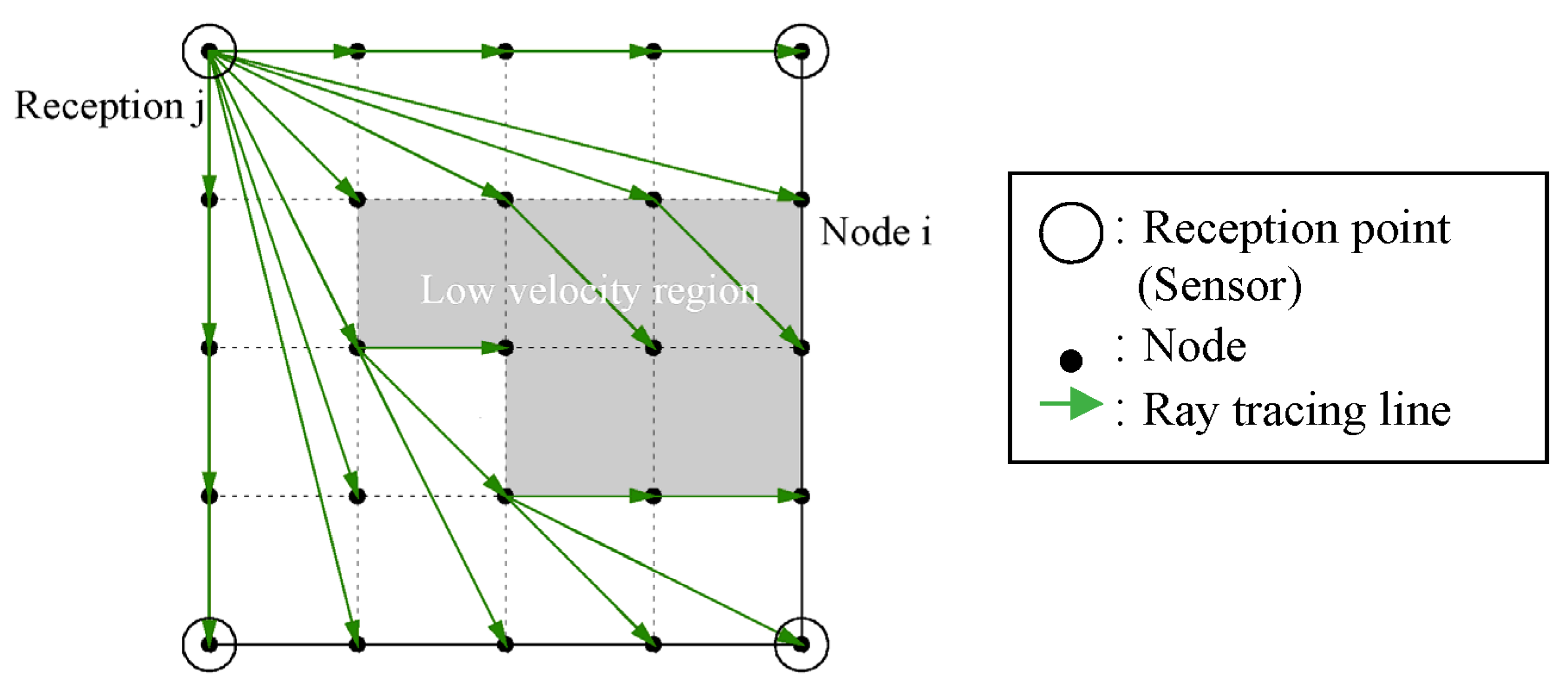
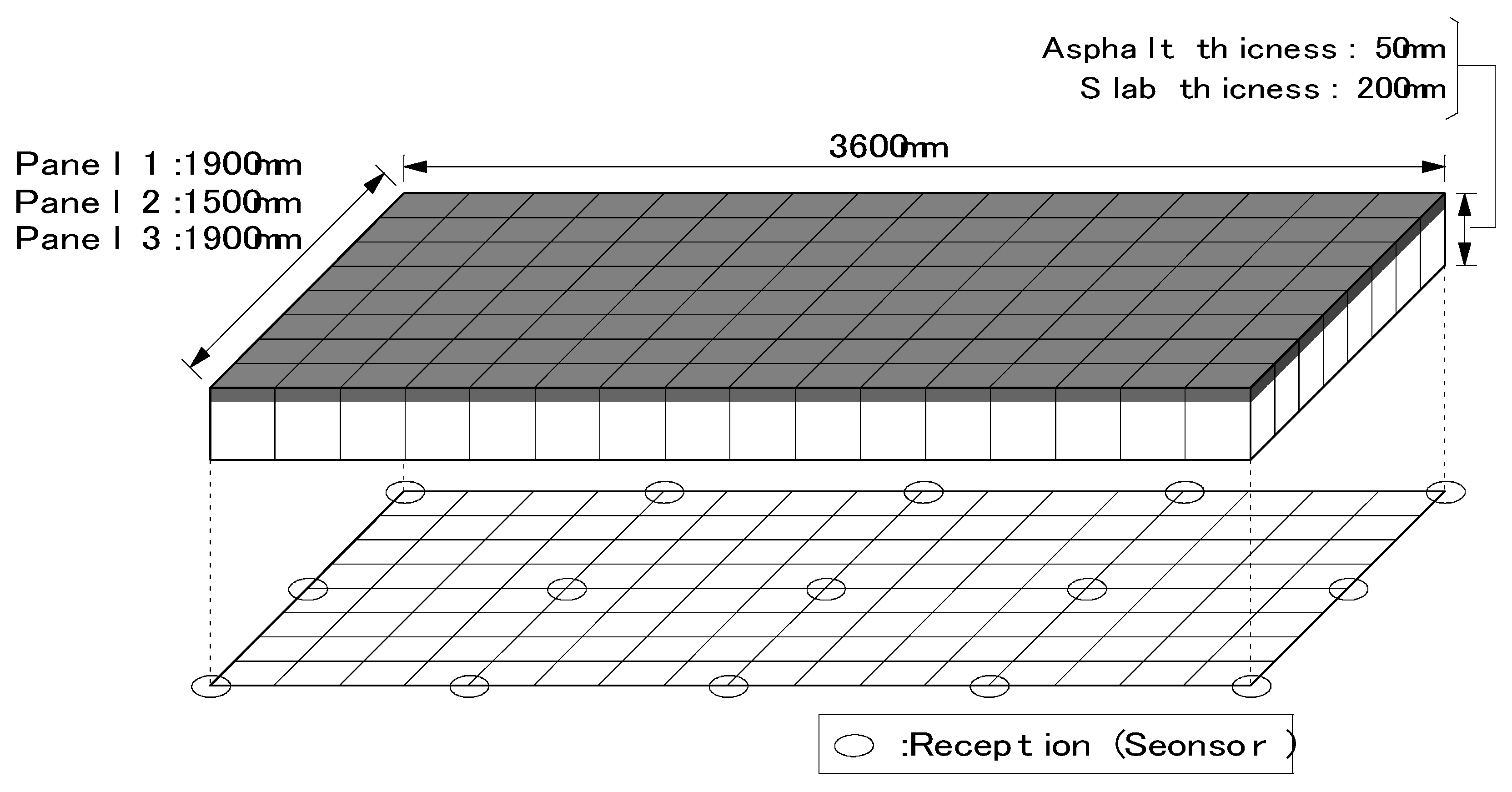
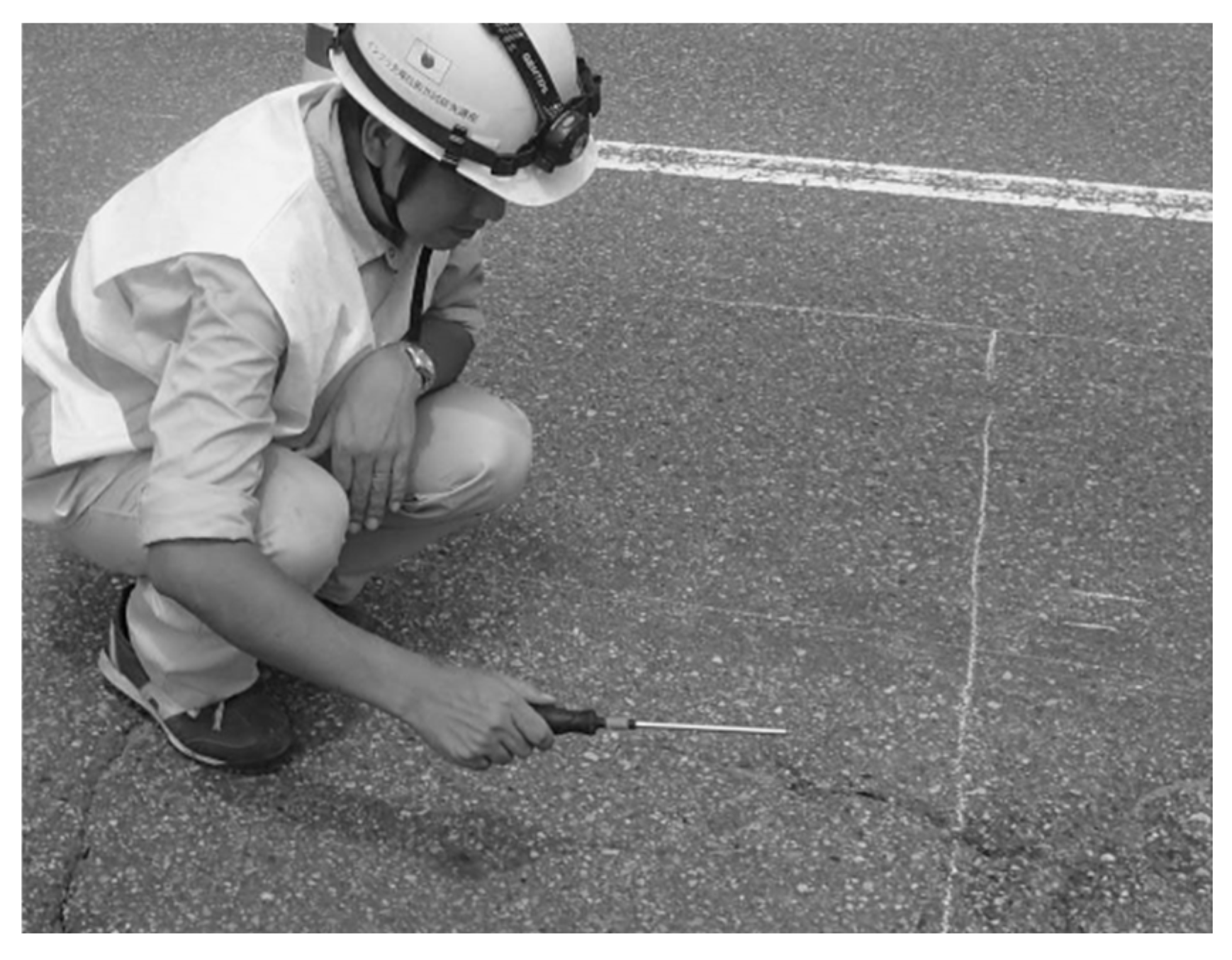
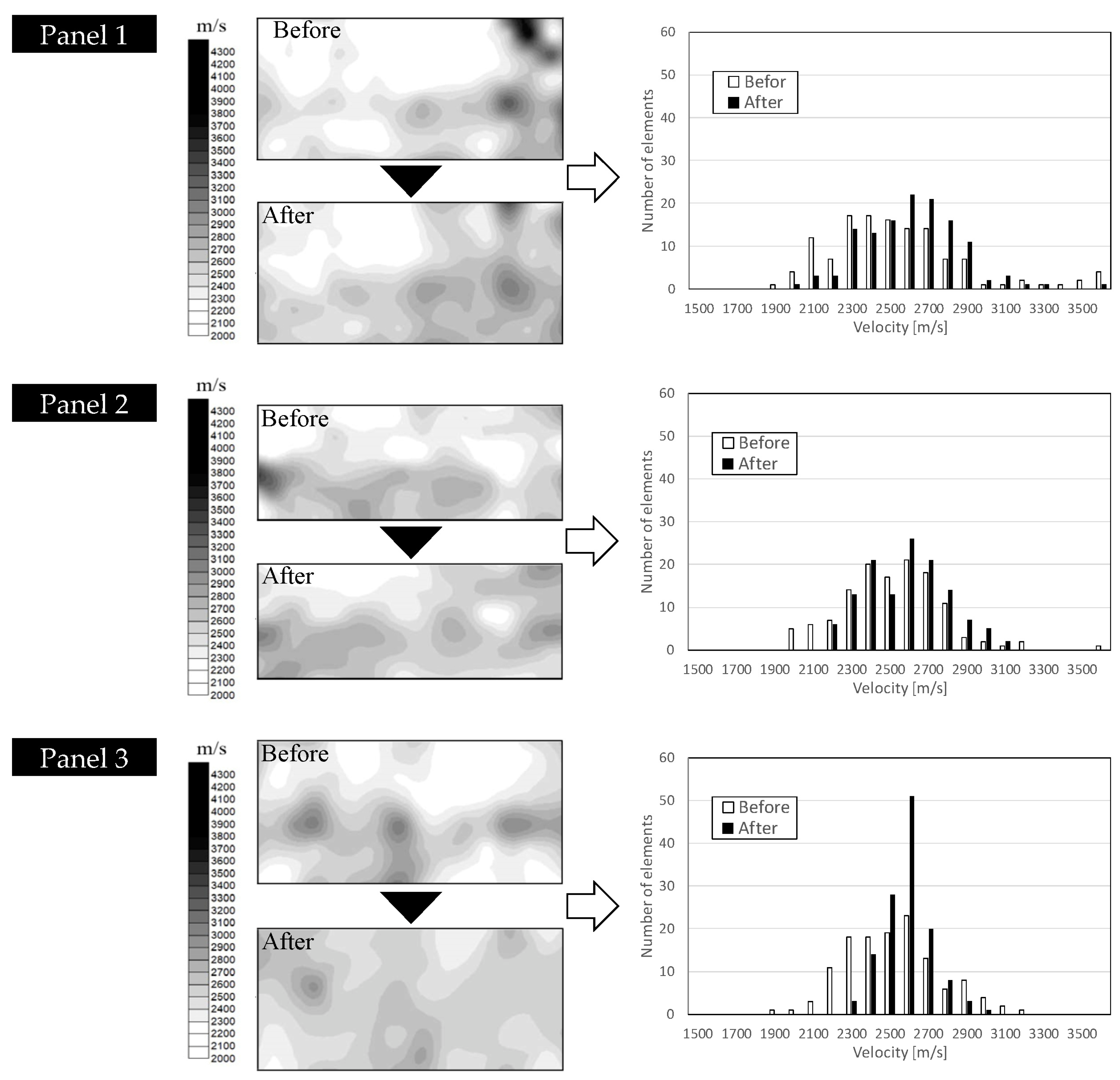

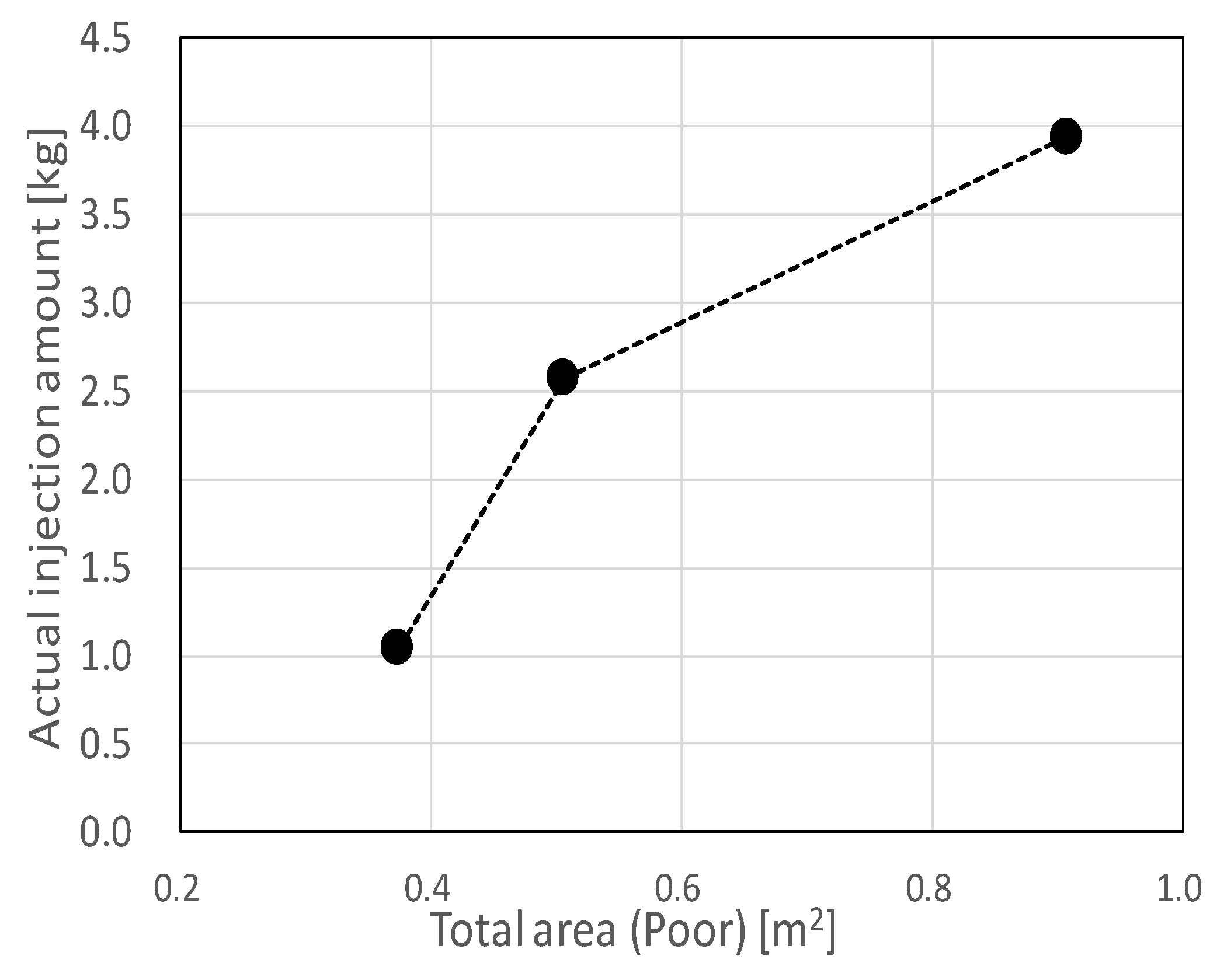
| Type | RC bridge (3 span composite girder bridge) |
| Length | 88.0 m |
| Age | 46 years |
| Thickness | Slab: 250 mm Asphalt: 50 mm |
| Condition | Web-shaped cracks were sporadically evident on the concrete surface. |
| Panels 1 and 2 | Panel 3 | |
|---|---|---|
| Method type | A | B |
| Injection material | epoxy-based resin 500 ± 200 mPa·s | epoxy-based resin 600 ± 100 mPa·s |
| Pressurizing | Using spring | Using rubber |
| Pressure | Int.; 0.06 N/mm2 Stable; 0.02 N/mm2 | Int.; 0.06 N/mm2 Stable; 0.02 N/mm2 |
| Panel 1 | Panel 2 | Panel 3 | |
|---|---|---|---|
| Injection amounts(designed) | 14.15 kg | 7.10 kg | 7.35 kg |
| Injection amounts (actually used) | 3.94 kg | 2.57 kg | 1.04 kg |
| VP [m/s] | Quality |
|---|---|
| >4570 | Excellent |
| 3660–4570 | Fine |
| 3050–3660 | Acceptable |
| 2130–3050 | Un-acceptable |
| <2130 | Poor |
Publisher’s Note: MDPI stays neutral with regard to jurisdictional claims in published maps and institutional affiliations. |
© 2018 by the authors. Licensee MDPI, Basel, Switzerland. This article is an open access article distributed under the terms and conditions of the Creative Commons Attribution (CC BY) license (https://creativecommons.org/licenses/by/4.0/).
Share and Cite
Okude, N.; Shiotani, T.; Nishida, T.; Hashimoto, K.; Furuno, S. Evaluation of Crack Repair Effect for RC Slab Using AE Tomography. Proceedings 2018, 2, 433. https://doi.org/10.3390/ICEM18-05331
Okude N, Shiotani T, Nishida T, Hashimoto K, Furuno S. Evaluation of Crack Repair Effect for RC Slab Using AE Tomography. Proceedings. 2018; 2(8):433. https://doi.org/10.3390/ICEM18-05331
Chicago/Turabian StyleOkude, Nobuhiro, Tomoki Shiotani, Takahiro Nishida, Katsufumi Hashimoto, and Syogo Furuno. 2018. "Evaluation of Crack Repair Effect for RC Slab Using AE Tomography" Proceedings 2, no. 8: 433. https://doi.org/10.3390/ICEM18-05331





